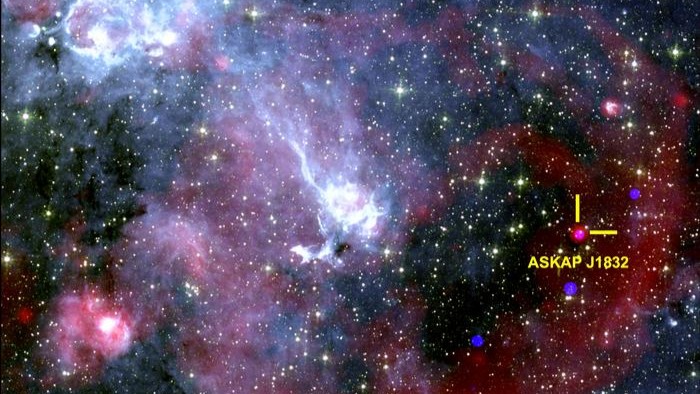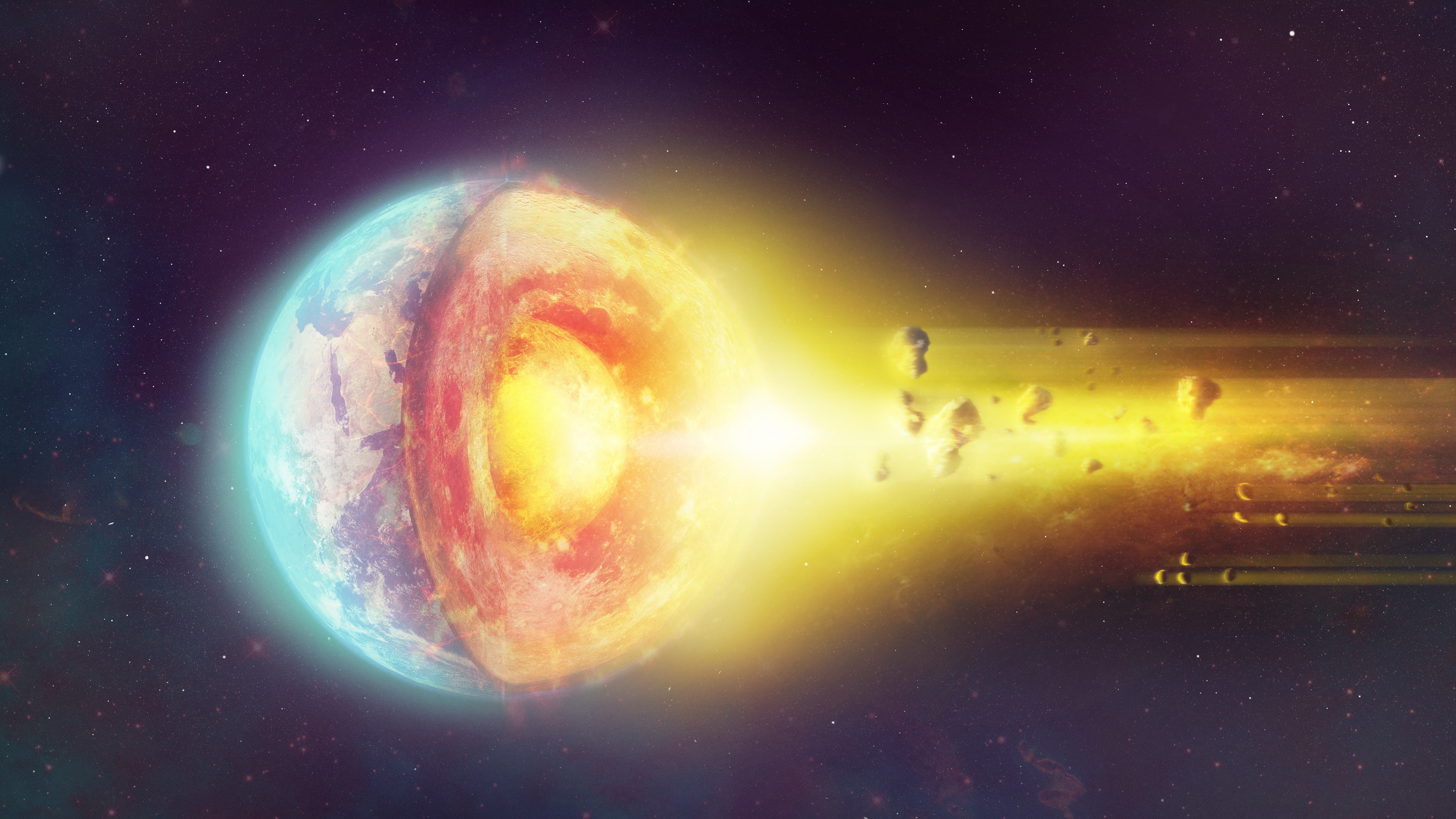Science news this week: Strange signals from space and Earth's leaking gold
May 31, 2025: Our weekly roundup of the latest science in the news, as well as a few fascinating articles to keep you entertained over the weekend.

From the world's oldest known human fingerprint to genetic discoveries made using 2.2 million-year-old tooth enamel, this week's science news has taught us a lot about our ancient ancestors. But we've also learned a lot about our own species.
While exploring what appeared to be "trash" in a cave in Mexico, two spelunkers came across dozens of artifacts that may have been used in fertility rituals by a little-known culture that inhabited the region 500 years ago.
Looking even further back in history, scientists uncovered clues about the rise and fall of the Maya civilization in ancient DNA from people buried up to 1,600 years ago in Honduras. And let's not forget the newly discovered "ghost" lineage from ancient China, whose identity was deciphered from a 7,100-year-old skeleton in the southwestern Yunnan province.
Looking beyond our own species, and our planet, researchers have been left stumped by some mysterious signals from outer space.
Strange signals from space
'Unlike anything we have seen before': Astronomers discover mysterious object firing strange signals at Earth every 44 minutes

Astronomers have identified a mysterious space object, named ASKAP J1832-0911, that spits out pulses of radio waves and X-rays in two-minute bursts at regular intervals. However, unlike traditional pulsars, which spit out radio signals every few seconds or milliseconds, the newfound object emits its pulses at intervals of 44 minutes — a period that was previously thought to be impossible.
These signals have left scientists scratching their heads, and unraveling this cosmic mystery could reveal previously unknown physics.
Discover more space news
Get the world’s most fascinating discoveries delivered straight to your inbox.
—NASA plans to build a giant radio telescope on the 'dark side' of the moon. Here's why.
Life's little mysteries
Do parrots actually understand what they're saying?

In the wild, parrots don't speak in human tongues; they communicate through a complex array of squeaks, squawks and whistles to find food and warn each other of potential dangers. Research has shown that these animals also use "signature contact calls" to refer to one another, similar to how we call each other by name.
But in captivity, parrots don't have other flockmates to learn to speak "parrot" from. Instead, they use their highly specialized brains to pick up on human speech. But do they really understand what they are saying? Or are they merely masters of mimicry?
Earth's core 'leaking' gold
Earth's core is 'leaking' gold, study finds

At the center of our planet lies a vast reservoir of gold and precious metals, hidden beneath thousands of miles of rock. But new research suggests that, while it's unlikely we will ever be able to mine Earth's core, some of these metals might nonetheless make their way up to the surface.
While studying volcanic rocks in Hawaii, scientists identified signs of a precious metal called ruthenium that they say could only have come from Earth's core-mantle boundary, located more than 1,800 miles (2,900 kilometers) below the planet's surface.
The team believes that their findings indicate that gold and other precious metals may also be "leaking" from Earth's core into the mantle above.
Discover more planet Earth news
—There's a humongous boulder on a cliff in Tonga. Now we know how it got there.
—Africa is being torn apart by a 'superplume' of hot rock from deep within Earth, study suggests
—The land under South Africa is rising every year. We finally know why.
Also in science news this week
—Physicists capture 'second sound' for the first time — after nearly 100 years of searching
—Giant 'senior citizen' sunspot on 3rd trip around the sun could break a century-old record
Science spotlight
'No radio astronomy from the ground would be possible anymore': Satellite mega-swarms are blinding us to the cosmos — and a critical 'inflection point' is approaching

"Megaconstellations" of private satellites are quickly becoming a reality, and that's a big problem for astronomers.
Satellites release low levels of radiation in the form of radio waves. As the satellites crowd the outer reaches of our atmosphere, the invisible pollution they let off may disrupt signals from ground-based astronomy instruments, thus limiting our ability to read radio signals from the cosmos.
"It would basically mean that no radio astronomy from the ground would be possible anymore," Benjamin Winkel, a radio astronomer at the Max Planck Institute of Radio Astronomy in Germany, told Live Science. "It will eventually reach a point where it is not worthwhile to operate a [radio] telescope anymore."
At the rate that these megaconstellations are growing, this inflection point could be reached in the next 30 years. But what can be done to stop it?
Something for the weekend
If you're looking for something a little longer to read over the weekend, here are some of the best long reads, book excerpts and interviews published this week.
—NASA plans to build a giant radio telescope on the 'dark side' of the moon. Here's why. (Explainer)
—'The Martian' predicts human colonies on Mars by 2035. How close are we? (Opinion)
—Sleep: Facts about how and why we sleep (Fact file)
Science in motion
Watch mesmerizing 1,000-foot-tall lava fountains: Kilauea volcano erupting in ways not seen for 40 years
Hawaii's Kilauea volcano, one of the most active in the world, has been erupting since December 2024. However, this week it did something very unusual.
On May 25, the volcano spewed several enormous lava fountains, some shooting more than 1,000 feet (300 meters) into the air. Such "episodic" fountaining has not been seen since the eruption of Pu'u'ō'ō in the 1980s, experts from the U.S. Geological Society (USGS) wrote.
As it erupts, the volcano has also released thousands of tons of toxic sulfur dioxide and strands of windblown volcanic glass, posing a significant threat to human health.
Follow Live Science on social media
Want more science news? Follow our Live Science WhatsApp Channel for the latest discoveries as they happen. It's the best way to get our expert reporting on the go, but if you don't use WhatsApp, we're also on Facebook, X (formerly Twitter), Flipboard, Instagram, TikTok, Bluesky and LinkedIn.

Pandora is the trending news editor at Live Science. She is also a science presenter and previously worked as Senior Science and Health Reporter at Newsweek. Pandora holds a Biological Sciences degree from the University of Oxford, where she specialised in biochemistry and molecular biology.
You must confirm your public display name before commenting
Please logout and then login again, you will then be prompted to enter your display name.


